LIVE UPDATES: Fed Chair Jerome Powell to deliver major speech at Jackson Hole
Introduction & Market Context
BigCommerce Holdings, Inc. (NASDAQ:BIGC) presented its first quarter 2025 financial results on May 8, 2025, highlighting the company’s continued strategic shift toward enterprise customers and improved profitability despite slowing overall growth. The e-commerce platform provider operates in a growing market, with global e-commerce adoption expected to increase from 19% in 2021 to 23% by 2026.
According to the presentation, worldwide e-commerce platform spend is forecasted to reach $16.5 billion by 2027, representing a 19% compound annual growth rate (CAGR). This growth is driven by enterprises increasingly choosing cloud/SaaS solutions over on-premise software, a trend that BigCommerce is well-positioned to capitalize on with its open SaaS platform.
As shown in the following snapshot of key metrics as of March 31, 2025:
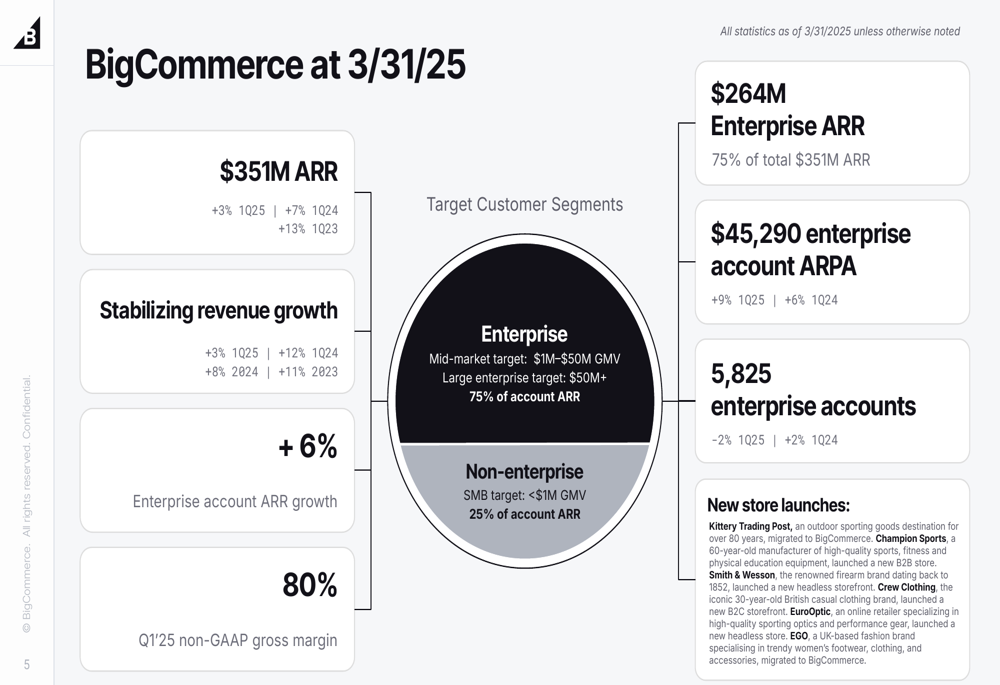
Quarterly Performance Highlights
BigCommerce reported total Annual Recurring Revenue (ARR) of $351 million for Q1 2025, representing a 3% year-over-year increase. This marks a slowdown from the 7% growth seen in Q1 2024 and the 13% growth in Q1 2023. However, the company has successfully shifted its focus to higher-value enterprise customers, which now account for 75% of total ARR at $264 million.
The company’s subscription revenue growth has moderated to 8% year-over-year in 2024, down from 17% in 2019, while Partner and Services revenue growth has slowed to 6% year-over-year in 2024, compared to 38% in 2019. This trend is illustrated in the following chart:
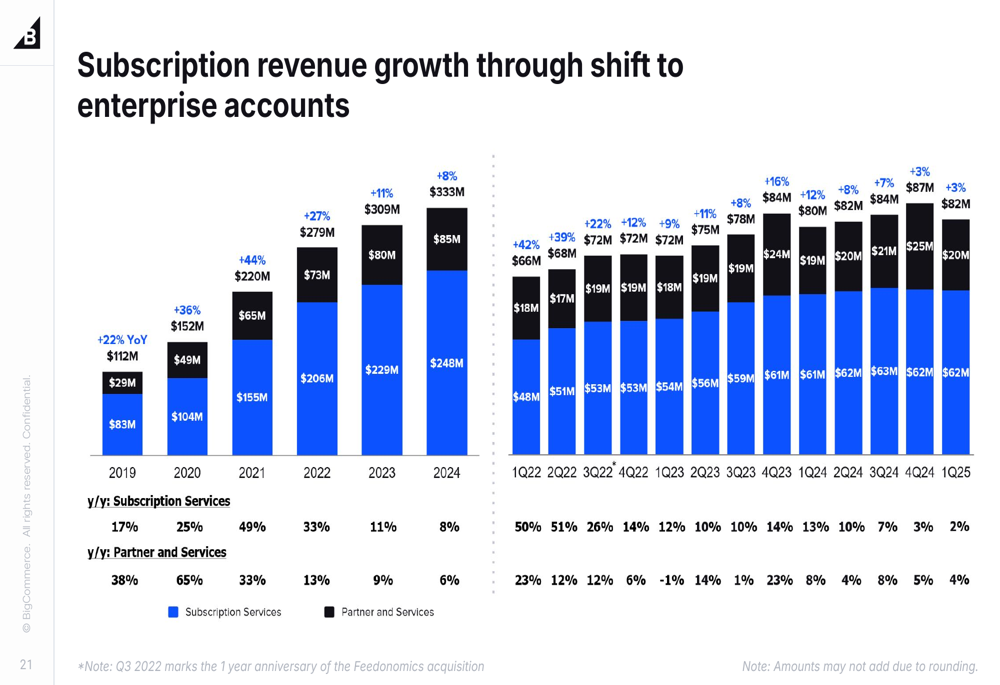
Despite the slowing growth, BigCommerce has maintained strong gross margins, with non-GAAP gross margin reaching 80% of total revenue, as shown in this chart:
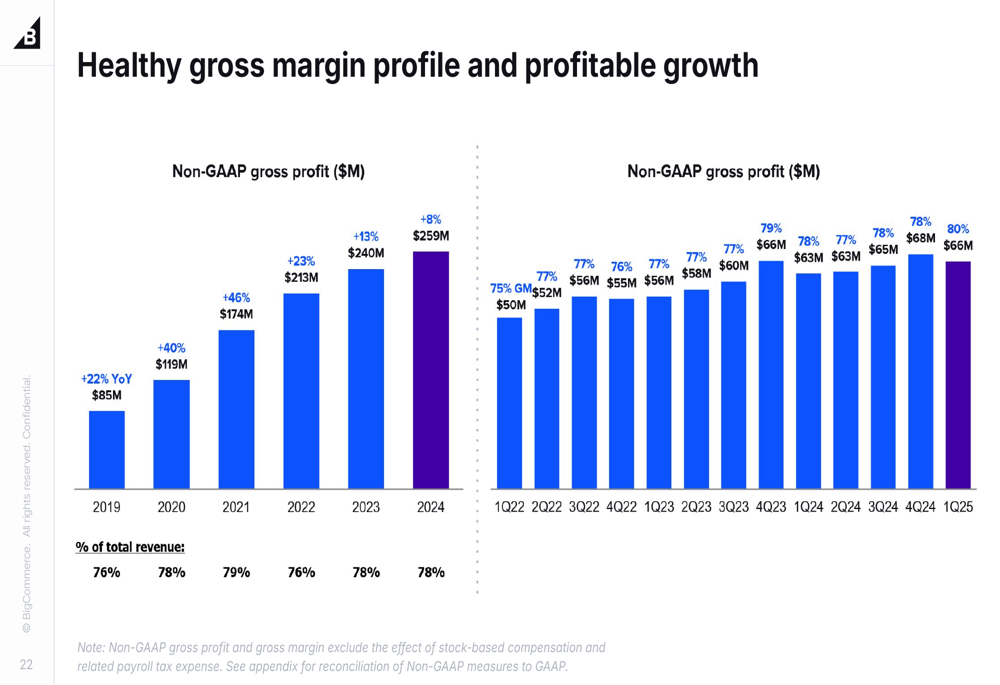
Strategic Focus on Enterprise Customers
BigCommerce’s strategic pivot toward enterprise customers has been a multi-year journey since its IPO. The company defines enterprise accounts as those with at least one contracted enterprise plan, including mid-market customers with $1-50 million in annual Gross Merchandise Value (GMV) and larger enterprises with over $50 million in annual GMV.
This shift is clearly illustrated in the following chart showing the growth of enterprise ARR contribution since the IPO:

The enterprise segment now represents 75% of total ARR, up from 52% in Q1 2020, demonstrating the company’s successful execution of its enterprise-focused strategy:

While the number of enterprise accounts decreased by 2% year-over-year to 5,825 in Q1 2025, the average revenue per account (ARPA) for enterprise customers increased by 9% to $45,290. This suggests that BigCommerce is successfully focusing on higher-value customers, as shown in the following chart:
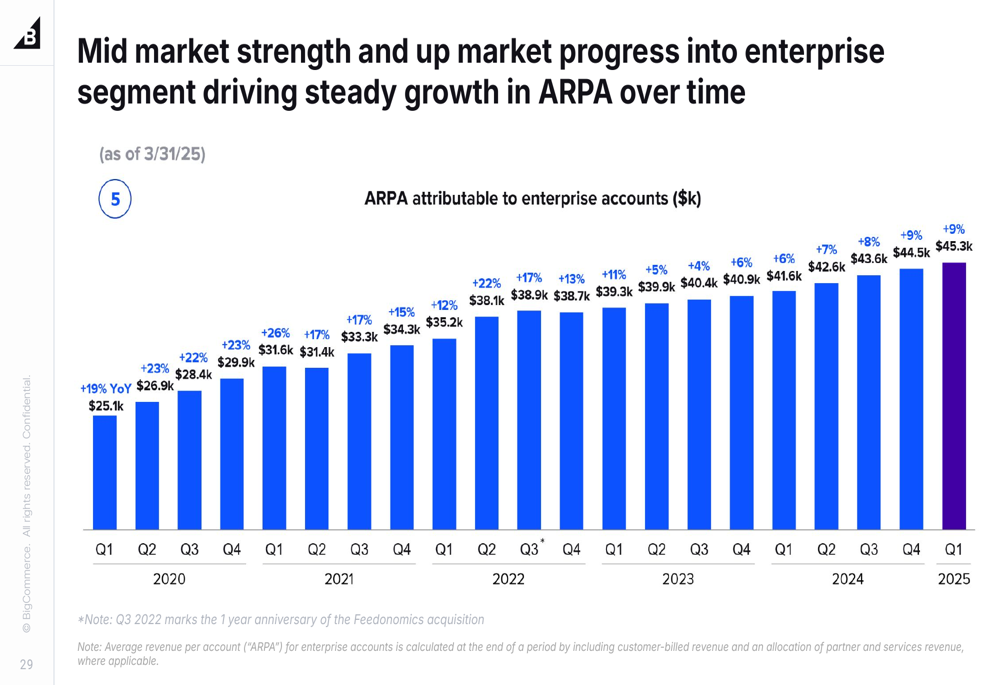
Profitability and Margin Improvements
One of the most significant achievements highlighted in the presentation is BigCommerce’s transition from loss-making to profitability. The company reported an operating margin of 6%, a substantial improvement from -34% in previous periods. This improvement has been driven by better operating expense leverage across sales and marketing, R&D, and general and administrative expenses:
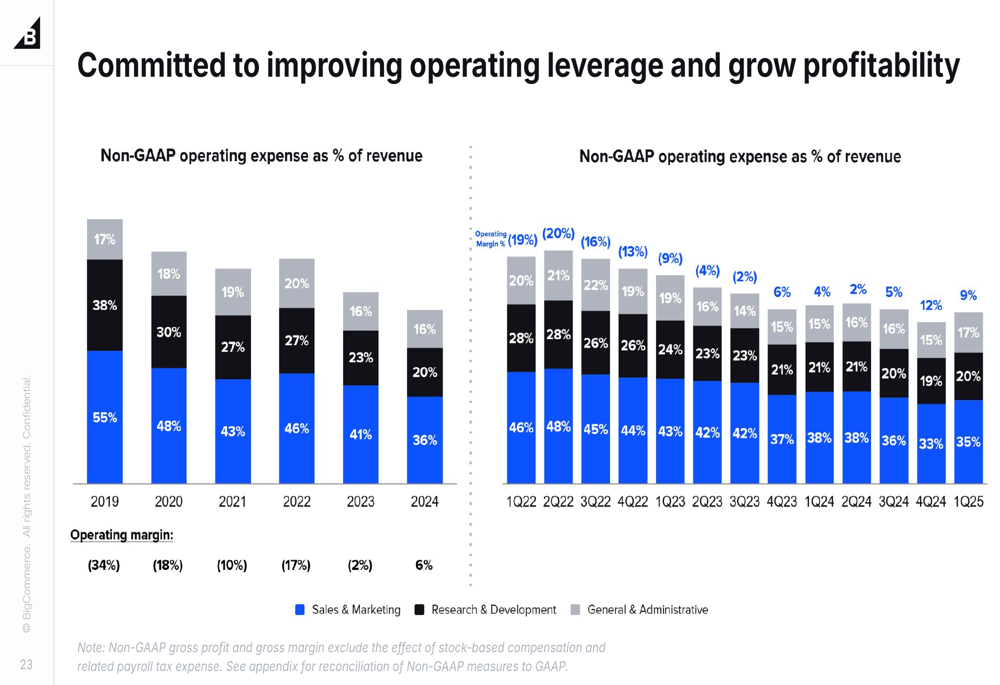
The ARR growth trajectory, while slowing, shows steady progress over the past five years, with the company noting that growth is expected to improve due to its focus on high-value enterprise accounts:
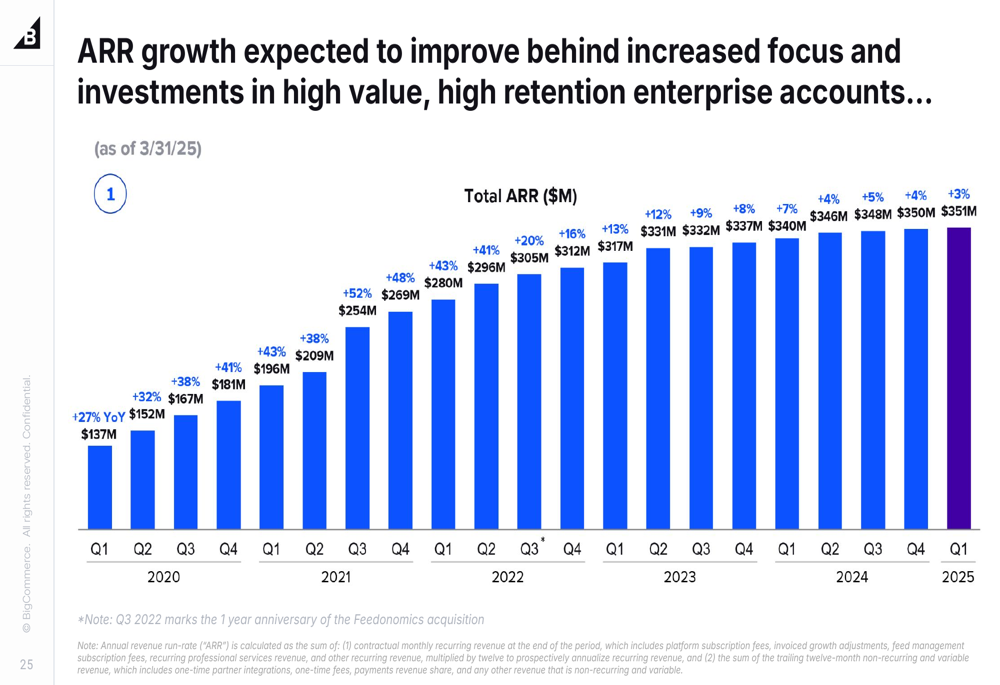
Forward-Looking Statements
Looking ahead, BigCommerce emphasized several investment highlights, including consistent revenue growth, a large and growing addressable market, strong gross margins, its open SaaS platform advantages, and increasing operating leverage. The company is positioning itself to capitalize on the growing demand for e-commerce solutions across various verticals, including Health & Beauty, Apparel, Electronics, Home & Garden, Food & Beverage, Sports & Outdoors, Automotive, and B2B & Industrial.
The company’s go-to-market strategy focuses on three key areas:
1. Omnichannel commerce - helping merchants sell across 100+ marketplace, social, and ad channels
2. B2B commerce - serving B2B buyers who expect modern experiences
3. Composable commerce - offering flexibility for enterprise brands to mix and match best-of-breed technology solutions
This strategic approach aligns with the company’s Q2 2024 earnings call, where CEO Brent Bellm emphasized the importance of becoming a leader in enterprise e-commerce globally and the growth potential of its SaaS platform for complex use cases over the next 15 years.
While BigCommerce faces challenges, including slowing growth rates in consumer e-commerce spending and declining net customer additions, its focus on larger customers with healthier contracts and the expected uptick in enterprise net new ARR provide reasons for optimism. The company’s successful transition to profitability, combined with its strategic focus on high-value enterprise customers, positions it well for sustainable growth in the competitive e-commerce platform market.
Full presentation:
This article was generated with the support of AI and reviewed by an editor. For more information see our T&C.
